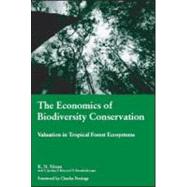The Economics of Biodiversity Conservation
, by Ninan, K. N.; Jyothis, S. (CON); Babu, P. (CON); Ramakrishnappa, V. (CON); Perrings, Charles- ISBN: 9781844073641 | 1844073645
- Cover: Hardcover
- Copyright: 3/30/2007
* Placing an economic value on biodiversity is seen by many as the best and perhaps only successful way of preserving it while also protecting livelihoods * This is the most comprehensive examination of valuation ever conducted, focusing on one of the world's top eight biodiversity "hotspots", with principles widely applicable across the world * Original comparisons of the different "values" of biodiversity, trade-offs, incentives for conservation, case studies of coffee growing and wildlife conservation and practical policy options Economic valuation of biodiversity and ecosystem services is possibly the most powerful tool for halting the loss of biodiversity while maintaining incomes and livelihoods. Yet rarely have such approaches been applied to tropical forest "hotspots", which house the vast majority of the planet's plant and animal species. This groundbreaking work is the most comprehensive and detailed examination of the economics of environmental valuation and biodiversity conservation to date. Focusing on the Western Ghats of India, one of the top biodiversity hotspots in the world, this volume looks at a cross-section of local communities living within or near sanctuaries and reserve forests such as coffee growers, indigenous people and farmers-pastoralists to assess the use and non-use values that people derive from tropical forests. It also looks at the extent of their dependence on forests for various goods and services, and examines their perceptions and attitudes towards biodiversity conservation and wildlife protection. The book concludes with an assessment of the institutional alternatives and policies for promoting biodiversity conservation through economic valuation methods.







